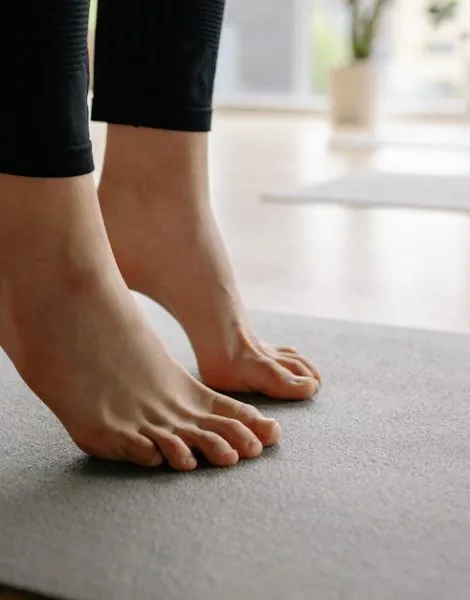In a world where stress seems to be the main character in everyone’s life story, grounding techniques offer a refreshing plot twist. These simple yet effective methods help individuals reconnect with the present moment, making anxiety feel like yesterday’s news. Imagine having a toolkit that turns overwhelming feelings into manageable moments—sounds like magic, right?
Whether you’re stuck in a never-ending meeting or facing a mountain of to-do lists, grounding techniques can be your secret weapon. They might not make your coffee, but they sure can help you savor every sip. From breathing exercises to sensory awareness, these techniques are like a mental spa day, minus the cucumber slices on your eyes. Dive in and discover how to anchor yourself in the chaos, because life’s too short to let stress steal the show.
Table of Contents
ToggleOverview of Grounding Techniques
Grounding techniques help individuals manage stress and anxiety effectively. They focus attention back to the present moment, transforming overwhelming feelings into manageable experiences. Breathing exercises serve as popular methods for inducing relaxation. By slowing down the breath, individuals can lower heart rates and promote calmness.
Sensory awareness techniques provide additional support. Examples include focusing on physical sensations, such as feeling the ground beneath one’s feet or noticing specific sounds in the environment. These activities help create a tangible connection to the present.
Movement-based grounding techniques are also effective. Walking can serve as a grounding exercise, allowing individuals to engage their bodies and senses simultaneously. Practicing yoga can enhance mind-body awareness while reducing stress.
Some individuals find benefit in visualization techniques. Imagining a peaceful scene, like a quiet beach or a serene forest, encourages relaxation and mental clarity. Guided imagery resources further assist with this method.
Using grounding objects, such as stress balls or textured stones, can also provide relief. Holding or manipulating these items creates a distraction that helps shift attention from stressors.
Practicing grounding techniques regularly can improve overall emotional regulation. Incorporating these methods into daily life empowers individuals to navigate challenges with greater ease. Each technique offers unique benefits, helping establish a sense of tranquility amidst chaos.
Benefits of Grounding Techniques
Grounding techniques offer numerous benefits, particularly in managing emotional well-being and reducing stress levels. Utilizing these methods fosters a greater sense of control and presence in daily life.
Emotional Regulation
Emotional regulation improves significantly through grounding techniques. These methods empower individuals to process their emotions consciously. Techniques like deep breathing can calm the nervous system, allowing for balanced emotional responses. Sensory awareness engages the mind, directing focus away from distressing thoughts. Individuals who practice these techniques often experience increased resilience in the face of challenges. They report feeling less overwhelmed, which enhances their overall emotional stability.
Stress Reduction
Stress reduction stands as a primary advantage of grounding techniques. Individuals frequently encounter stress in various aspects of life. Engaging in breathing exercises leads to reduced heart rates and promotes relaxation. Sensory awareness techniques cultivate present-moment focus, mitigating racing thoughts common during stressful episodes. Incorporating movement-based practices like yoga not only relieves tension but also promotes physical well-being. Regular practice of these methods equips individuals with effective tools to navigate life’s stressors, fostering a calmer mindset.
Types of Grounding Techniques
Grounding techniques fall into various categories, including physical and mental approaches that help individuals reconnect with the present.
Physical Techniques
Physical techniques focus on the body’s sensations to anchor attention. Breathing exercises are prominent in this category, encouraging slow, deep inhalations and exhalations to promote relaxation. Movement practices, such as walking or yoga, engage both mind and body, enhancing awareness while reducing stress. Another effective approach involves using grounding objects, which can be anything from stress balls to textured stones that provide tactile sensations. Engaging in these physical activities cultivates a sense of stability, helping individuals remain present amidst chaos.
Mental Techniques
Mental techniques emphasize cognitive focus to foster calmness. Visualization practices, for example, involve imagining serene scenes or comforting environments, aiding in relaxation. Sensory awareness practices encourage individuals to identify smells, sounds, or textures in their surroundings. Engaging in mindfulness meditation allows for a more profound connection to thoughts and feelings, facilitating emotional regulation. Journaling offers a reflective space, helping process emotions while identifying stressors. Each of these mental techniques supports individuals in navigating challenging moments with clarity and composure.
How to Implement Grounding Techniques
Implementing grounding techniques involves following structured steps while being mindful of common pitfalls. These methods can significantly enhance emotional well-being and reduce stress.
Step-by-Step Guide
- Find a Quiet Space: Select an environment free from distractions to focus on the technique.
- Choose a Technique: Decide between breathing exercises, sensory awareness, or visualization.
- Focus on Your Breath: Inhale deeply for four counts, hold for four counts, and exhale for four counts, repeating this sequence several times.
- Engage the Senses: Notice three things you can see, hear, and feel. This takes attention away from distressing thoughts.
- Move Your Body: Walk or practice yoga, paying close attention to how each movement feels, grounding the body in the present moment.
Common Mistakes to Avoid
Individuals often overlook their surroundings during grounding exercises. Failing to clear the mind can lead to ineffective practice. Another mistake includes rushing through techniques without proper focus. It’s essential to take time with each step to feel the benefits. Neglecting to practice regularly will reduce effectiveness. Establishing a consistent routine enhances emotional stability. Lastly, misunderstanding the purpose of grounding techniques can lead to frustration; they help reconnect to the present, not eliminate stress entirely.
Grounding techniques offer practical solutions for managing stress and anxiety. By incorporating these methods into daily routines individuals can cultivate a sense of calm and presence. Whether through breathing exercises or sensory awareness these strategies empower people to navigate life’s challenges with greater ease.
The key lies in consistent practice and finding the techniques that resonate most. As individuals embrace these approaches they not only enhance their emotional well-being but also foster a deeper connection to the present moment. With time and dedication grounding techniques can transform overwhelming experiences into manageable ones, leading to a more balanced and fulfilling life.









